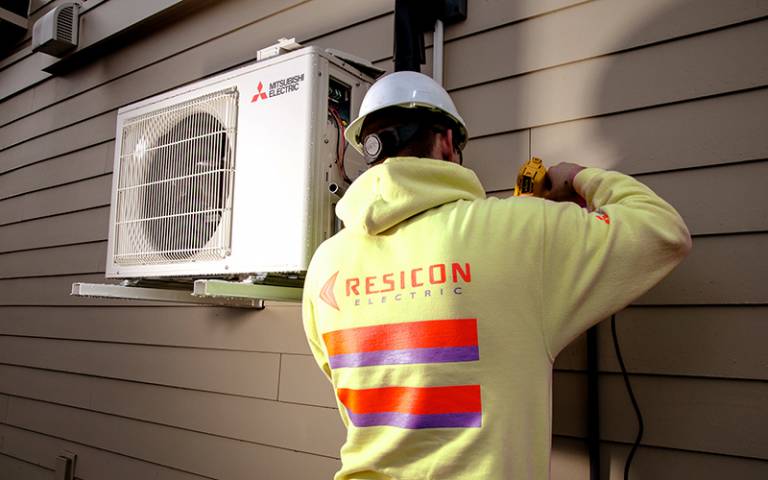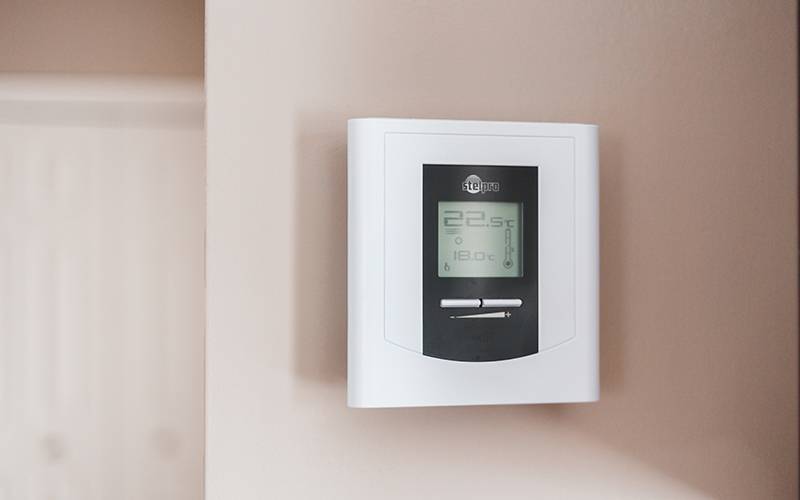Flexible heating: how does it work and how does it feel?
12 January 2023
In this article, UCL Energy Institute doctoral student Adria Martin Vilaseca and Senior Research Fellow Jenny Crawley explore the flexible applications of heat pumps.

In transitioning to low carbon heating, in the coming years many of us will be getting heating systems which use electricity, such as heat pumps. Electrical heating systems allow us to make use of renewable and nuclear energy; however, we highlighted in previous posts about how this can create new problems:
For example, it will be difficult for the UK’s generators and electricity networks to provide and deliver enough low carbon electricity at peak times of day when everyone is trying to use it. This might be the case first thing in the morning, or in the evening (4-8pm) when many of us are cooking and using electrical appliances.
Intelligent energy use
It is likely that households with heat pumps will be incentivised to turn them down or off during these peak times and instead use them at other times, through Time of Use tariffs or other arrangements which make the price of electricity variable throughout the day. This is known as demand response.
Some households will use purpose-built heat storage so that they can run their heat pumps at off-peak times, but most probably will not have access to this so will rely on heat being retained in their home during peak periods when the heat pump does not run.

Considering human experience
There is little research on the real world implications of running heat pumps at different times from when the heat is needed (although there are some exceptions[1]). We need to know what happens to the temperature in the homes, what does it feel like for the householders, and how should heat pumps be controlled, in order to reliably deliver the right outcomes.
We have published two research articles recently on the technical[2] and human[3] side of heat pump demand response, both based on three real case studies of early adopters in the UK. Even though this is a small number of cases, we believe some useful findings have emerged which can help those who design and govern flexibility programs.
Key findings
Our case study households all had heat pumps switching down or off from 4 - 7pm in winter. We interviewed the householders and collected technical data from their heat pumps and houses, which consisted of two older houses and a newer one. We found that:
- Over the three hour period, the temperature dropped on average 1.1°C in one of the older houses and 0.6° C in the newer house.
- In some cases, householders noticed the demand response occurring. They felt it through the air and surfaces in their home getting colder, heard it through changes in noise levels, and saw it through their smart meter in-home displays.
- Only the households in the older homes noticed the temperature falling. Some of these participants tolerated the temperature drop, and some did not. Whether the drop was tolerated depended on factors including how motivated they were about reducing electricity use, their activities during the 4 - 7pm period (active or static) or how willing they were to adapt (e.g., by wearing more clothes or moving to warmer rooms).
- It was more difficult to get the heat pumps to switch off and stay off during the 4 - 7pm period than we anticipated. Heat pumps are arranged in lots of different configurations within heating systems, and they are usually designed to run uninterruptedly. The way demand response was implemented in each of these configurations shaped the amount of electricity reduced. To achieve the greatest reduction requires access to the heat pump controller to get it to switch off.
- When the heat pumps came back on after the peak period, they caused spikes in electricity use, which is bad for them and potentially a problem for the electricity grid.
- We should not forget that heat pumps are needed to generate hot water, not just space heating, and that many occupants want to do this in the evening.

Our recommendations
There is very little research on householders' experience of demand response and the existing studies are usually restricted to measuring people's tolerance to temperature drops. More work on this is needed as this will determine the potential for flexible heating and could help to identify opportunities to make it more appealing.
Given the diverse range of heat pumps and arrangement within heating systems, we need to find ways of controlling heat pumps for flexibility purposes which work across this diversity. This should turn them up/down and on/off as required, without them coming on when they are not supposed to, and without causing big spikes when their normal operation resumes.
There is much more to be done to understand how heat pump flexibility works in practice. This is an exciting area, and we are keen to explore ways of implementing flexibility which work for people and for the electricity system.
 Close
Close

